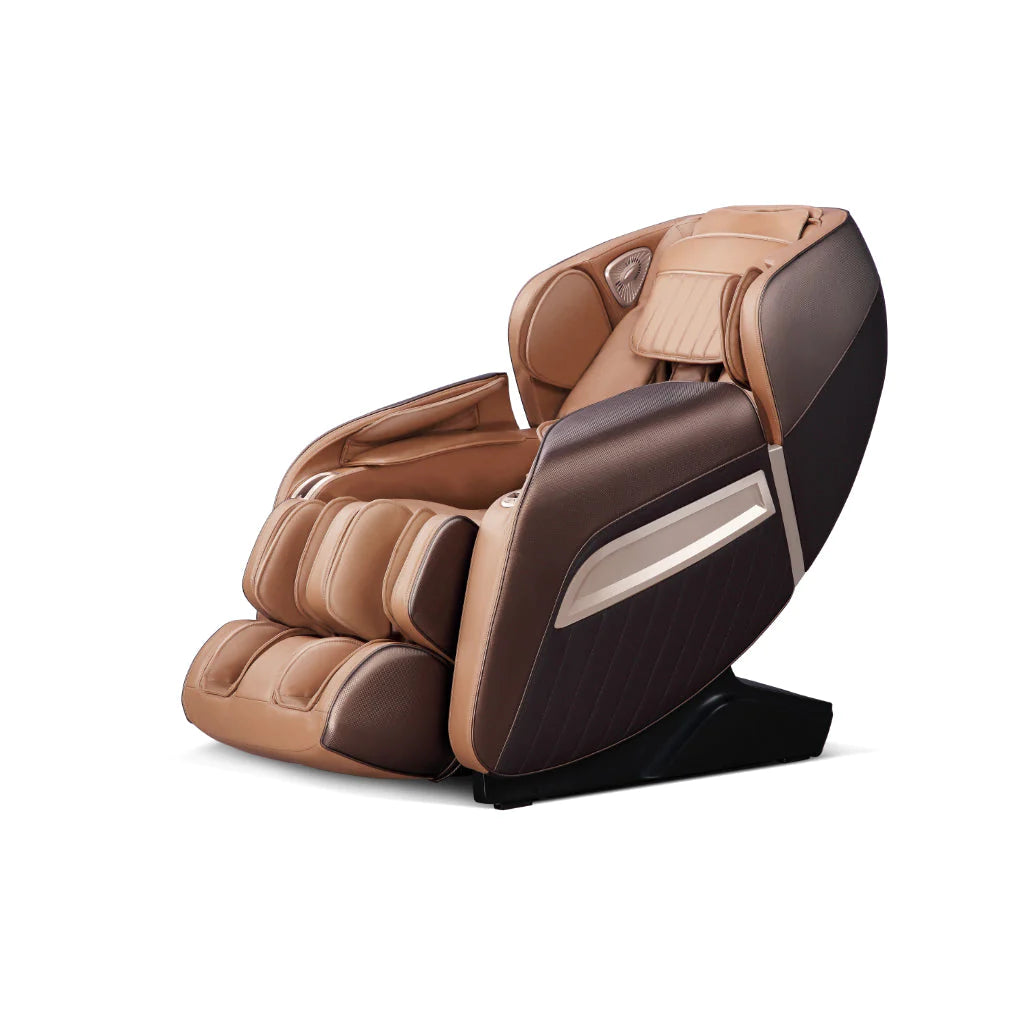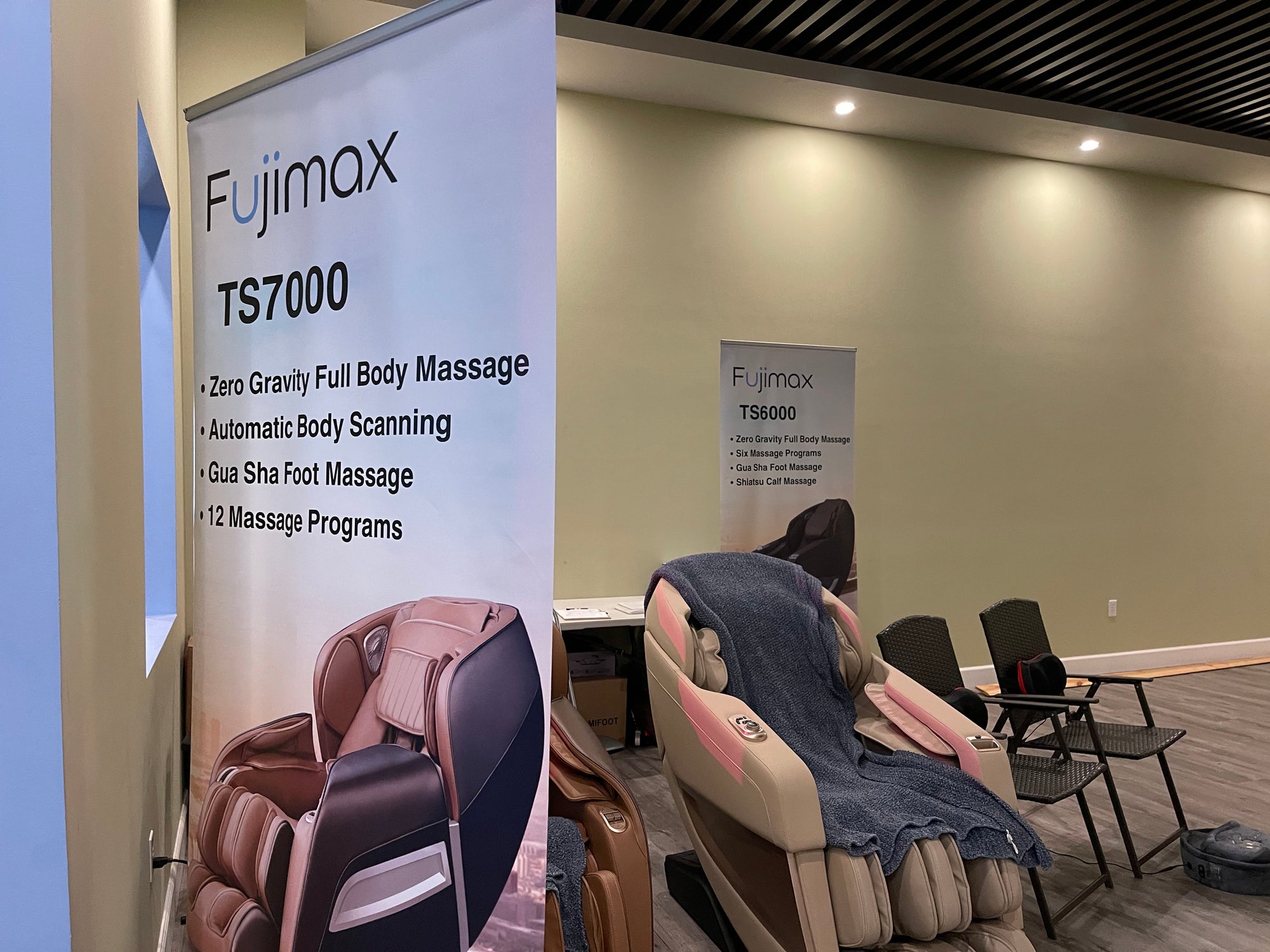What massage chair techniques does my massage chair use?
Premium massage chairs, such as those offered by Fujimax, incorporate multiple massage styles and techniques to produce the best results for the user. In this blog post, we will go over massage techniques massage chairs perform and how they can come together to provide the best massage possible.

Shiatsu Massage: This massage technique comes from Japan and uses some of the same techniques as acupressure. When performed manually, this technique involves using fingers, thumbs, and other parts of the body to apply direct pressure to various points on the body. These points along the body that are pressed are along the body’s meridians, of which there are twelve principal meridians and two centerline meridians. This concept comes from Traditional Chinese Medicine and meridians are the pathways in which the body’s energy or Qi flows to different parts of the body. Each major meridian connects to major organs such as the lungs, stomach, and kidney. It is believed that if this flow becomes disrupted, then symptoms such as headaches and body pain can develop. When pressure is applied along these meridians, they become stimulated to properly flow. This style of massage will help to improve blood flow within the body, allowing the body to efficiently move oxygenated blood to muscles and organs while removing stress hormones and cellular waste. Shiatsu massage outcomes include reduced general pain, stress, and anxiety, decreased fatigue, and improved sleep and bowel function.
Premium massage chairs, such as those offered by Fujimax, incorporate multiple massage styles and techniques to produce the best results for the user. In this blog post, we will go over massage techniques massage chairs perform and how they can come together to provide the best massage possible.

Shiatsu Massage: This massage technique comes from Japan and uses some of the same techniques as acupressure. When performed manually, this technique involves using fingers, thumbs, and other parts of the body to apply direct pressure to various points on the body. These points along the body that are pressed are along the body’s meridians, of which there are twelve principal meridians and two centerline meridians. This concept comes from Traditional Chinese Medicine and meridians are the pathways in which the body’s energy or Qi flows to different parts of the body. Each major meridian connects to major organs such as the lungs, stomach, and kidney. It is believed that if this flow becomes disrupted, then symptoms such as headaches and body pain can develop. When pressure is applied along these meridians, they become stimulated to properly flow. This style of massage will help to improve blood flow within the body, allowing the body to efficiently move oxygenated blood to muscles and organs while removing stress hormones and cellular waste. Shiatsu massage outcomes include reduced general pain, stress, and anxiety, decreased fatigue, and improved sleep and bowel function.

Gua Sha: Gua Sha comes from Traditional Chinese Medicine and involves the scraping of the skin with a smooth tool. Scraping might sound painful, but this technique is not. This method has become more popular recently as people have begun to sculpt their faces with Gua Sha, however, Gua Sha massages are not confined to just the face. Fujimax Massage Chairs, such as the TS7000, utilize Gua Sha techniques to massage the sole of the feet. Muscles are surrounded by fascia, a thin sheath of fibrous tissue. When the fascia is healthy, it will feel smooth. Unhealthy damaged fascia will feel rough and bumpy. These bumps are fascia adhesions, and can restrict blood flow, damage nerves, and be the source of pain. Gua Sha massage techniques break up the adhesions in the fascia and help remove the bumps, bringing your fascia back to a smooth, healthy state.

Compression: Compression is used to relax the body, soften muscle tissue, increase blood flow, and stimulate the parasympathetic nervous system. The parasympathetic nervous system is a network of nerves throughout the body that will send hormones such as endorphins, serotonin, and dopamine after a period of stress. These three hormones create feelings of calmness, contentment, and happiness. As a result, compression massages are efficient for relaxation. Compression massages can help to move excess fluids and relieve pressure as blood flow improves. When compression is used, it is applied rhythmically and can range in depth and pressure. Fujimax Massage Chairs utilize airbags to provide a full compressive massage to the body.

Kneading: Kneading is a massage technique involving applying pressure to the top and deeper layers of muscle tissue. Kneading can improve the range of motion, decrease muscle pain, and aid recovery. A kneading massage compresses soft tissues in circular motions, lifts, rolls, and squeezes the muscles. This technique breaks down adhesions and realigns collagen fibers. Adhesions are bands of scar-like tissue that stick together and form inside the body and can occur from inflammation, surgery, or injury. People commonly refer to adhesions as “knots” in the body. Kneading also causes an increase in the temperature of the skin because of friction and this results in increased blood flow due to vasodilation and capillarization. Capillarization is the increase of blood capillaries, which translates to better blood flow to an area. Vasodilation is the dilating of blood cells which increases soft tissue temperature and assists with the cellular exchange, allowing more oxygen and nutrients from the blood to make it into the muscular cells.

Tapping: Tapping or tapotement is a percussive massage technique performed with the fingers, cupped hands, or loose fists to treat soft tissue pain and soreness. Repetitive striking stimulates and moves muscles and increases blood circulation. This technique can help stretch muscle fibers, help with recovery, and cause general relaxation and stress reduction. Tapotement can help to break down adhesions and improve the range of motion.

Zero Gravity Massage: A Zero Gravity Massage is a type of massage that only massage chairs can perform! Zero gravity is a position based on how astronauts are seated during take-off to balance the force of gravity evenly across the body. In this position, the body is reclined with the legs above heart level. Blood circulation improves, and pressure along the spine, pelvic region, and lower back is reduced. This position will enhance the benefits and outcomes of any massage.
When using automatic massage programs like those available with Fujimax massage chairs, the chair will utilize a combination of the above techniques to prove the best possible massage. Of course, if one technique of massage is preferred over another, manual modes exist to customize your massage experience to fit your needs.


